When you’re at the grocery store, or even shopping online, what types of things do you look for on the front of the package to help you make your purchasing decisions? Do you look for specific labels? Do you look for specific claims? While front of package labels and claims may seem helpful, are they really telling you anything about the health or safety of the food? It turns out that many, if not most of them, really aren’t.
Here are 8 of the most common misleading food marketing claims:
1. No nitrites or nitrates added
Although this particular labeling regulation may be changing soon, you may have noticed the “No Nitrites or Nitrates Added” label on processed meat products, such as deli meats and bacon, where curing agents such as sodium or potassium nitrate or nitrite have not been added. This may seem like a healthier product, however, in many cases nitrates/nitrites are still being added to these products.
If you look closely, there will often also be an asterisk next to the “No Nitrites or Nitrates Added” label that states something like “except for those naturally occurring in sea salt or celery powder.” This is because even though sodium or potassium nitrate or nitrite aren’t being added, there are naturally occurring nitrates and nitrites in sea salt and celery powder that are being used for the same purpose as the “synthetic” nitrites. The FDA has set limits for the amount of synthetic nitrites allowed, but there are no set limits when the nitrates/nitrites are being added via natural sources like sea salt or celery powder, so it could even mean that these products have higher levels.

Why is this a concern at all? Under certain conditions, like high heat, nitrite can be converted to nitrosamines, compounds that are thought to be carcinogenic to humans. Manufacturers often add vitamin C, which inhibits nitrosamine formation as well.
2. Uncured
Because only sodium and potassium nitrate and nitrite are considered to be curing agents, processed meats that are cured using naturally occurring nitrates and nitrites derived from sea salt, celery or beets or some other vegetable or fruit naturally high in nitrate are required to be labeled as “uncured.” This is obviously very misleading because they are, in fact, cured.
Curing isn’t a bad thing either. It can help to inhibit the bacterium that causes botulism as well as slow down fat oxidation, which is what causes fats to become rancid. There are some processed meat products that are uncured and have no synthetic or naturally occurring nitrites added. These will also be labeled as “uncured” but won’t include the “except those naturally occurring in [ingredient]” statement after the “No Nitrites or Nitrates Added” statement.
3. USDA Certified Organic
While U.S. Department of Agriculture Certified Organic foods do have to meet specific production practices that have been set by the USDA Agricultural Marketing Service, they state that these regulations “do not address food safety or nutrition.” In fact, organic foods are no safer or more nutritious than their conventional counterparts. Any differences that have been found are too small to have any effects on human health.
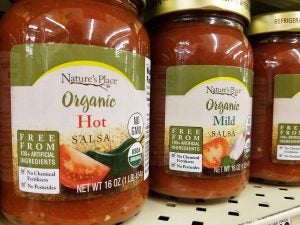
Additionally, organic foods are not pesticide free, like many people may think. Organic farmers are allowed to use approved organic pesticides as well as some approved synthetic pesticides. There is a large variation in pesticide toxicity and environmental impact — within and between organic and synthetic pesticides — so “natural” pesticides aren’t inherently less toxic or better for the environment either, but that’s not to say residues on either conventional or organic foods are anywhere near unsafe levels.
USDA Organic regulations also do not allow antibiotics and growth hormones to be used on livestock, but that doesn’t make organic meat any safer or more nutritious (more on that later). Organic also doesn’t allow “GMOs,” which, as we’ll discuss next, doesn’t mean much. If you purchase organic specifically because you think it’s better for the environment, well, that’s not what the label means either. This label is misleading because many consumers assume it means the food is healthier, safer and/or better for the environment when that’s not necessarily the case.
4. Non-GMO
Many consumers assume that if a product has a non-GMO label, it must be superior to a similar product next to it without that label, but that’s not true at all.
First, just because a food product doesn’t have a non-GMO label doesn’t mean it’s “GMO.” Second, “GMOs” have been extensively tested and are just as safe and nutritious as their non-GMO counterparts. Lastly, almost everything grown today has been genetically modified at some point in time. Humans have been cross breeding plants for thousands of years as well as using a technique known as mutagenesis since the 1930s, in which radiation and chemicals are used to induce random genetic mutations.
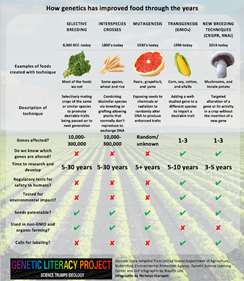
Thousands of mutant crops exist today, however, these older genetic modification methods are not considered to be “GMO” by groups such as the Non-GMO Project and can be labeled as non-GMO and USDA Certified Organic. The Non-GMO Project, for example, only considers the more modern, more precise and more heavily regulated crop modification techniques as “GMOs.” Not only does the non-GMO label not tell you about the nutrition or safety of your food, but it also creates unnecessary fear around foods that are perfectly safe and nutritious and can allow for more environmentally friendly farming practices.
5. No added hormones
The USDA banned added hormones in both organic and conventional poultry in the 1950s. The use of hormones in pigs is also banned. So, even though it is true, a “No Added Hormones” label on your chicken, turkey, or bacon is a bit deceptive because it’s true whether they’ve decided to add that label to the packaging or not. Hormones are allowed to be provided to beef cattle so that they grow quicker and, therefore, require less feed. A study examined the environmental footprint of beef production with and without hormone implants and found that the use of hormones reduce greenhouse gas emissions by about 5 percent. The hormones that they naturally produce are at higher levels than the amount added.
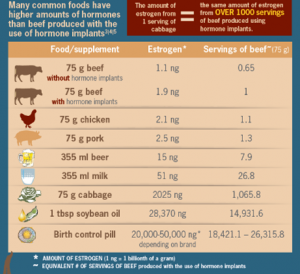
There is no nutritional difference between meat from a steer that’s had a hormone implant and one that has not, because the actual difference in hormone levels is less than a billionth of a gram. rbST, a cow growth hormone that increases milk production, can be used in dairy cows in the U.S., but is rarely used. rbST has not been shown to impact human health, which is why anything labeled “milk from cows not treated with rBST” is required to also have the following statement “no significant difference has been shown between milk derived from rBST treated and non rBST treated cows.”
6. No antibiotics
Currently there is no single definition for “antibiotic-free” or “no antibiotics” on food labels. It is not a USDA approved label and has no clear meaning. Whenever an antibiotic is given to a food animal, a strict waiting — or “withdrawal” period — is required before that animal can be processed into meat or poultry.
The USDA’s Food Safety and Inspection Service (FSIS) conducts a monitoring program to ensure that antibotics are effectively eliminated from animals’ systems and that no unsafe residues are detected in meat and poultry. Therefore, there are not unsafe levels of antibiotic residues in your food regardless of whether that animal received antibiotics during its lifetime or not.
7. Natural, all natural, or 100% natural
The terms “natural,” “all natural,” or “100% natural” do not carry a standard definition from both the FDA and USDA, so food companies tend to use the terms as they deem fit.
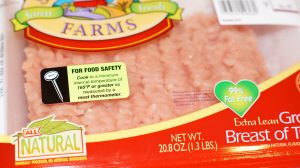
USDA definition: “A product containing no artificial ingredient or added color and is only minimally processed. Minimal processing means that the product was processed in a manner that does not fundamentally alter the product. The label must include a statement explaining the meaning of the term natural (such as “no artificial ingredients; minimally processed”).”
FDA (non-formal) definition: “Nothing artificial or synthetic (including all color additives regardless of source) has been included in, or has been added to, a food that would not normally be expected to be in that food.”
Although a “natural” label usually implies healthier and/or safer, that’s just not the case. Whether a chemical is natural or synthetic tells you precisely nothing about it’s safety. This is a marketing label based off of nothing but the appeal-to-nature fallacy.
8. No Toxic Pesticides
This phrase is used quite a bit to market organic foods. It just plays into the misconceptions that organic doesn’t use pesticides, which we already discussed is untrue, or that the pesticides allowed in organic farming are inherently less toxic than the ones used in conventional farming, which is also untrue. Organic Valley has even gone as far as stating “No Toxic Pesticides” on their cartons of milk. No food, organic or otherwise, has anywhere near “toxic” levels of pesticides, so it’s about as helpful as slapping a “No Unicorn Poop” label on your food.
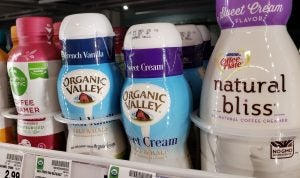
Understanding food marketing labels can help you make food purchasing decisions based on facts rather than unnecessary fears of “toxic” pesticides or “GMOs.” Most of these marketing labels will be located on the front of the package.
If you really want to know the factual information about a food, that can be found on the nutrition panel and the ingredient declaration. Otherwise, most of the rest is just marketing fluff.
Food Science Babe is the pseudonym of an agvocate and writer who focuses specifically on the science behind our food. She has a degree in chemical engineering and has worked in the food industry for more than decade, both in the conventional and in the natural/organic sectors.



